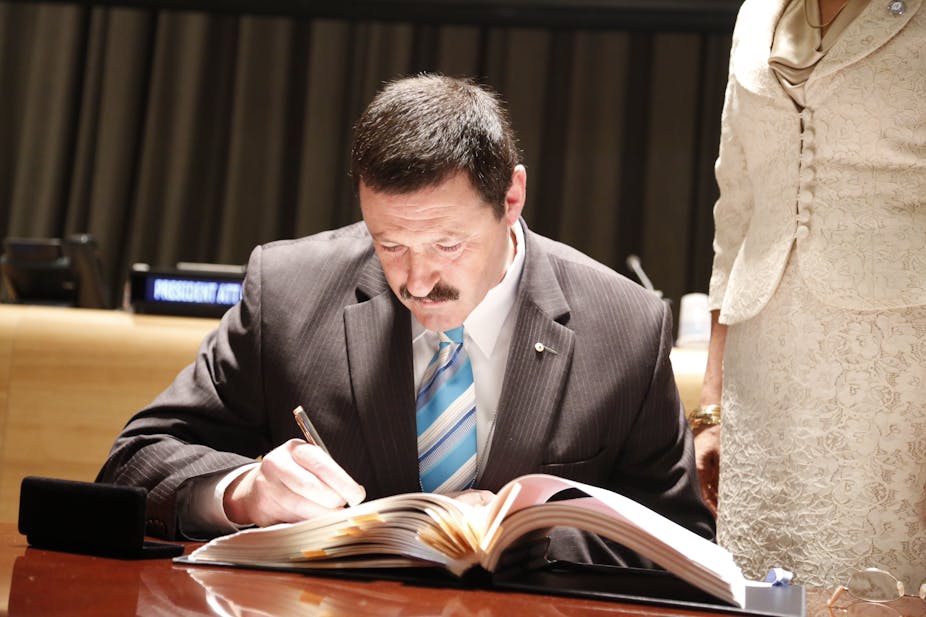In planning their campaigns to win the bellwether seat of Eden-Monaro on September 14, strategists in the head offices of both major parties are likely to be preparing both an “air war” and a “ground war”.
The “air war” means aerial bombardment: reaching masses of voters via national electronic advertising. The “ground war” means hand to hand combat: contacting voters one by one on their door steps, in their letter boxes, and in the streets, shopping centres and bus stops of their community.
Where the “air war” will feature the prime minister and the opposition leader, the “ground war” will be more about the local candidates - Labor’s incumbent Mike Kelly and Liberal challenger Peter Hendy. The “air war”, for Eden Monaro, emerges from the TV studios in Canberra; the “ground war” will be fought on the streets of Cooma, Cobargo and Queanbeyan.
The military metaphors are perhaps especially relevant in Eden-Monaro, given the high number of defence force voters in Eden-Monaro, and Kelly’s army background and defence portfolio.
But in 2013 the language of air and ground wars accurately conveys the state-of-the-art practice of election campaigning in marginal seats around Australia. In studying the election in Eden-Monaro we are studying a laboratory in which party Head Offices are constantly experimenting with and refining their campaign techniques.
“Air wars” became fixed features of election campaigning in the 1970s, when the national party Head Offices first used the recently formed national TV networks to blanket the nation with their electronic messages of change.
These high-cost, high-visibility, high-emotion campaigns, executed for head office by professional advertisers and market researchers, were effective because they could efficiently reach the party’s safe seats as well as the marginal seats needed to assemble a majority in the House of Representatives. They tended to make local campaigning irrelevant, as candidates could rely on the big national factors to drive their campaigns.
Air warfare remains a critical part of modern campaigning, built around TV and radio commercials and, increasingly, internet videos that feature the parties’ parliamentary leaders, promote their policies and promises, and attack their opponents. Much of the media reporting of election campaigns remains fixated with this type of activity.
But over the decades, such campaigns have declined in effectiveness (though not in cost) as network TV audiences fragmented; campaign strategists moved to supplement them with more focussed efforts targeted at specific voters and specific seats. Equipped with ever more granular market research and census data, strategists could identify the critical undecided voters with greater precision. From the late 1980s, both parties were allocating more and more resources to marginal seat campaigning, heralding the rise of the “ground war” campaign style.
Where the air war is all high-visibility – who wants to hide an advertising campaign? - the ground war tends to be more covert. It is a boots on the ground type of campaigning: campaign workers (volunteer and paid) are required on the spot, to door-knock voters in their homes, distribute leaflets, run sausage sizzles, collect signatures on petitions, organise postal votes in nursing homes, and the like. On Election Day itself, armies of volunteers, up before dawn to festoon voting booths with bunting, will distribute How to Vote cards.
To secure victory in Eden-Monaro, both Kelly and Hendy can be expected to deploy all the tactics of the “ground war” style. Indeed unlike a marginal seat in, say, Western Sydney, which falls within the major Sydney TV markets, Eden-Monaro is a rural seat and lacks a major TV market (except whatever spills over from the ACT). So the “ground war” will be proportionately more important in Eden-Monaro.
Direct mail is the weapon of choice for this kind of integrated campaign. The letters seem personalised and localised but are the product of a highly centralised campaign. Both major parties maintain complex data bases which link the electoral roll with census data, phone canvassing data and other data sources. Using this information, correspondence to individuals can be tailored to reflect their interests and opinions.
As an opposition candidate, Peter Hendy is likely to use direct mail as a simple and direct way of introducing himself and his family and to highlight local issues of concern. As a government MP, Mike Kelly is likely to highlight services he’s provided to the electorate using map-style leaflets - showing a map of Eden-Monaro with arrows locating government spending projects such as roads, GP Super Clinics, schools built under Building the Education Revolution program, and regional development initiatives.
It would be easy – but I think, wrong – to see the ground war campaign in 2013 as representing a revival or throw-back to some 1940s golden age, with local candidates addressing public meetings on street-corners. What we are seeing instead is the extension and reinforcement of a centralised campaign managed out of the parties’ professional head offices.
As one national party official expressed it in a recent research project on campaign professionalism: “the campaign has to be run top down and bottom up, and completely integrated”.
Accordingly, bottom up ground war campaigns are actually designed, planned, funded and often staffed by the national head office, and managed along lines set out in campaign manuals written and issued by head office. The ground war elaborates and reinforces the themes and arguments of the air war: local deviation from the central plan is discouraged; consistency is valued over innovation; and amateurism is tolerated but not extolled.

